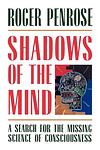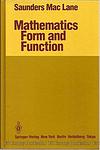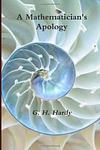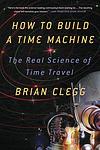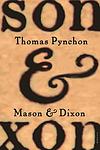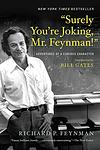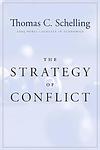Best Science Book Ever
This is one of the 284 lists we use to generate our main The Greatest Books list.
-
The Periodic Table by Primo Levi
"The Periodic Table" is a collection of short stories that use elements of the periodic table as metaphors to explore the author's experiences as a Jewish-Italian chemist before, during, and after World War II. Each chapter is named after a chemical element, reflecting its significant role in the story. The work provides deep insights into the human condition and the power of science, while also serving as a poignant memoir of survival during the Holocaust.
-
King Solomon's Ring by Konrad Lorenz
This book is a fascinating exploration of animal behavior by a renowned zoologist. It delves into the author's personal experiences and observations of animals in their natural habitats, focusing particularly on birds, dogs, and jackdaws. The author uses these observations to draw conclusions about animal psychology and behavior, often comparing it to human behavior. The book is named after the biblical King Solomon, who was said to have a ring that allowed him to understand the language of animals.
-
Arcadia by Tom Stoppard
"Arcadia" is a play that intertwines two timelines, set in the same English country house but centuries apart. In the early 19th century, a gifted young girl and her tutor delve into intellectual pursuits, exploring mathematics, nature, and the early inklings of chaos theory, while around them, the adults engage in witty repartee, romantic entanglements, and poetic rivalries. In the present day, scholars and descendants of the house's historical residents attempt to piece together the past, often misinterpreting the evidence they find. The play explores themes of time, truth, and the impact of the past on the present, all while showcasing the enduring nature of human curiosity and the quest for knowledge.
-
The Selfish Gene by Richard Dawkins
This groundbreaking book presents a revolutionary perspective on the theory of natural selection. The author argues that genes, rather than individuals or species, are the true units of evolution. He suggests that these 'selfish' genes are driven by their own survival, leading to complex behaviors and characteristics in the organisms they inhabit. This work reframes our understanding of evolution, emphasizing the gene's role in shaping biological life and behavior.
-
The Double Helix: A Personal Account of the Discovery of the Structure of DNA by James D. Watson
This book is a personal account of the race to discover the structure of DNA, told from the perspective of one of the co-discoverers. It provides an insider's view of scientific research, the collaboration and competition, the dedication, the doubt, the exhilaration of discovery, and the often fraught relationship between science and the rest of life. The book also explores the personalities, quirks, and conflicts of the scientists involved in the groundbreaking discovery.
-
Galileo by Bertolt Brecht
This play delves into the life of the renowned Italian scientist, Galileo Galilei, who challenged the church's belief in a geocentric universe. It explores his struggles against the Catholic Church, his recantation, and the consequences of his actions on his life and those around him. The narrative also examines the conflict between science and religion, the ethics of scientific discovery, and the price of truth.
-
Pluto's Republic by Peter B. Medawar
"Pluto's Republic" is a collection of essays and lectures that delve into the philosophical and social aspects of science, exploring the nature of scientific thought, the relationship between science and literature, and the role of creativity and intuition in scientific discovery. The book also examines the ethical implications of scientific progress, the conflict between science and religion, and the challenges of scientific education. Through a series of thought-provoking pieces, the author, a Nobel laureate, offers insights into the human side of scientific endeavor, advocating for a more nuanced understanding of the interplay between science and society.
-
The Voyage of the Beagle by Charles Darwin
This book is a vivid and exciting travel memoir as well as a detailed scientific field journal covering biology, geology, and anthropology that demonstrates the author’s keen powers of observation, written at a time when Western Europeans were still discovering and exploring much of the rest of the world. The author's five-year journey took him from the coasts of South America, Australia, and Africa to the South Pacific islands, during which he collected and documented the natural history of these areas. The voyage and the specimens he brought back would later form the basis for his famous theory of evolution.
-
The Blank Slate by Steven Pinker
"The Blank Slate" challenges the conventional belief that human behavior is largely shaped by the environment and experience, arguing instead that genetics play a significant role. The book delves into the controversies surrounding this concept, exploring the implications it has on politics, violence, child-rearing, and the arts. It also argues that acknowledging our innate traits can lead to a more humane society, as it would allow for a better understanding of our strengths, weaknesses, and individual differences.
-
A Leg To Stand On by Oliver Sacks
In this introspective memoir, a renowned neurologist recounts his personal journey of recovery after suffering a severe leg injury in a mountaineering accident. The narrative delves into the author's profound experience of losing the sense of connection with his leg, as it becomes a foreign, unresponsive object. Through his convalescence, he confronts the challenges of physical and psychological healing, exploring the intricate relationship between the body and the mind. His reflections on the nature of illness, the process of rehabilitation, and the empathy required by medical professionals offer a deep understanding of the patient's perspective and the human capacity for resilience.
-
Consciousness Explained by Daniel Dennett
The book in question offers a comprehensive theory of consciousness, challenging traditional views and proposing a scientific understanding of the mind. The author argues against the Cartesian model of consciousness as a central, unified entity and instead presents the "Multiple Drafts" model, which posits that consciousness arises from various cognitive processes occurring in parallel. The work delves into the nature of perception, memory, and language, employing insights from psychology, neuroscience, and artificial intelligence to explain how complex phenomena such as self-awareness and intentionality can emerge from the interactions of non-conscious brain functions. The book is both a critique of outdated philosophical ideas about the mind and an attempt to clarify how consciousness can be studied and understood through empirical means.
-
Shadows Of The Mind by Roger Penrose
In "Shadows of the Mind," the author delves into the complex relationship between the physical brain and the conscious mind, arguing against the prevailing computational theory of mind. The book presents a hypothesis that human consciousness transcends algorithmic computation, suggesting that quantum mechanics plays an integral role in the emergence of consciousness. The author critiques the limitations of artificial intelligence in replicating human thought and proposes that understanding consciousness may require new physics that bridges the gap between the known scientific principles and the phenomenological experience of awareness.
-
On Growth and Form by D'Arcy Wentworth Thompson
"On Growth and Form" is a landmark work that explores the science of biology from a mathematical perspective, emphasizing the patterns and geometry found in living organisms. The book discusses how physical and mathematical laws influence the way that organisms grow and develop, and how different species exhibit similar patterns of growth. It also touches on how these principles apply to the structure of the universe and the patterns found in nature. This work is considered a foundational text in the field of mathematical biology.
-
Invention by Norbert Wiener
The book in question is a seminal work that delves into the complex relationship between human beings and machines, exploring the profound implications of technological advancements on society. It discusses the principles of feedback and control in engineering and how these concepts apply to biological systems, ultimately leading to the development of cybernetics. The author, a prominent mathematician and philosopher, examines the ethical and philosophical dimensions of artificial intelligence and automation, cautioning against the uncontrolled use of technology and advocating for a future where machines enhance human life rather than replace it.
-
Gödel, Escher, Bach by Douglas Hofstadter
The book explores concepts of formal systems, recursion, self-reference, and infinity through the interdisciplinary lens of mathematics, art, and music. The narrative intertwines biographical sketches of the titular figures - a mathematician, an artist, and a composer - with dialogues and discussions to illustrate complex ideas. The author uses these figures as metaphors to delve into the nature of human cognition and consciousness, suggesting that our minds are essentially self-referential systems akin to the works of Gödel, Escher, and Bach.
-
Mathematics, Form And Function by Saunders Mac Lane
The book in question is a comprehensive exploration of the nature, origin, and historical development of mathematics. It delves into the philosophical and logical foundations of mathematical concepts, examining how they arise from natural phenomena and human activities. The work discusses the structure and function of mathematical language and its relation to logic and set theory, while also considering the role of mathematics in the physical sciences, and its application to problems in the real world. The author presents a unified view of mathematics as a coherent whole, emphasizing the interplay between its abstract form and practical function.
-
A Mathematician's Apology by G. H. Hardy
"A Mathematician's Apology" is a deeply personal reflection on the beauty and importance of pure mathematics. The author, a renowned mathematician, defends the pursuit of mathematics for its own sake, arguing it's a creative art form akin to poetry or painting. The book provides insight into the mind of a working mathematician and the aesthetic appeal of mathematics, while also discussing its practical utility and the author's own work on number theory and the theory of prime numbers.
-
The Man Who Mistook His Wife for a Hat by Oliver Sacks
The book is a collection of clinical tales about patients suffering from a variety of neurological disorders. The author, a neurologist, shares his experiences with these patients, whose conditions range from common ailments like amnesia and aphasia, to rare disorders like visual agnosia and Tourette's Syndrome. The stories are both compassionate and insightful, revealing the complexities of the human brain and the resilience of the human spirit, even in the face of debilitating illness.
-
How To Build A Time Machine by Paul Davies
The book is a fascinating exploration of the theoretical underpinnings and scientific principles that suggest the possibility of time travel. It delves into the realms of physics, particularly Einstein's theory of relativity, and examines how wormholes and cosmic strings could potentially be manipulated to create a pathway through time. The author, a renowned physicist, presents complex concepts in an accessible manner, discussing both the technical aspects and the philosophical implications of time travel. While acknowledging the immense technical challenges and the current limitations of our understanding, the book serves as an intriguing guide to the science behind one of the most captivating and enduring fantasies of human imagination.
-
Mason & Dixon by Thomas Pynchon
"Mason & Dixon" is a postmodern historical novel which follows the story of the 18th-century British astronomers and surveyors Charles Mason and Jeremiah Dixon, who are known for the Mason-Dixon line. The novel is written in a complex, digressive style, and it includes numerous sub-plots and a wide range of themes. It explores the scientific, philosophical, and sociopolitical issues of the Enlightenment era, as well as the personal lives and friendship of the two title characters.
-
"Surely You're Joking, Mr. Feynman!": Adventures of a Curious Character by Richard P. Feynman
The book is an autobiography of a Nobel Prize-winning physicist, filled with humorous and insightful anecdotes from his life. It highlights his adventures from his early years, working on the Manhattan Project, to his teaching years at Caltech. The book showcases his unconventional thought process, his insatiable curiosity, and his passion for science, painting a vivid picture of a man who never stopped questioning and learning.
-
The Strategy Of Conflict by Thomas Schelling
The book in question is a seminal work in game theory and strategic thinking, exploring how individuals and organizations can achieve their goals in situations of competition and conflict. The author delves into the paradoxes of strategic behavior, emphasizing the importance of credible commitments, communication, bargaining tactics, and the role of brinkmanship. By examining a wide range of examples, from everyday life to international crises, the book provides insights into the nature of conflict and cooperation, offering a framework for understanding the strategic actions that can lead to mutually beneficial outcomes or escalate to destructive confrontations.
-
Microbe Hunters by Paul de Kruif
"Microbe Hunters" is a classic work of scientific literature that chronicles the pioneering work of early microbiologists. The book brings to life the groundbreaking discoveries of scientists who dedicated their lives to understanding the invisible world of microbes. These pioneers include figures like Louis Pasteur and Robert Koch, who made significant strides in the field of bacteriology. The book is a blend of scientific facts, biographical sketches, and the author's own infectious enthusiasm for the subject matter, making it an engaging read for both scientists and lay readers alike.
the Royal Institution of Great Britain, 23 Books
On 19 October 2006, the Royal Institution of Great Britain named the 1975 short story collection The Periodic Table, by Primo Levi, the best science book ever. After taking nominations from many scientists in various disciplines, authors, and other notable people (such as the Archbishop of Canterbury), the Royal Institution compiled a shortlist of books for consideration. This shortlist was presented to the public at an event held at Imperial College and the audience voted to determine which book was "the best."
Added 4 months ago.
This list has a weight of 42%. To learn more about what this means please visit the Rankings page.
Here is a list of what is decreasing the importance of this list:
- List: only covers 1 specific genre
- Voters: not critics, authors, or experts, but the books on the list were curated by critics/experts
- Voters: are mostly from a single country/location
If you think this is incorrect please e-mail us at [email protected].











